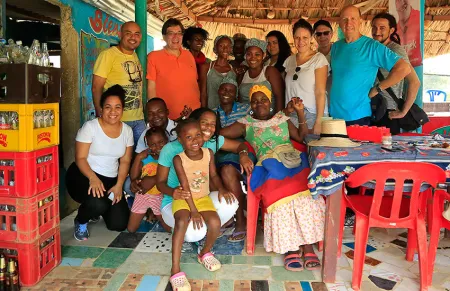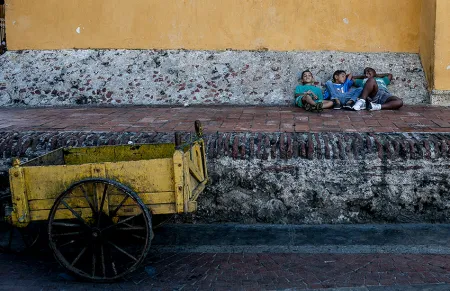
Immortalized by Gabriel Garcia Marquez, the heroic Cartagena is translated into a less fantastic reality beyond the walls that enclose the city. A few meters from postcard stripped scenario is Pedro Blas Julio Romero who runs at will as the authority of the letters. Responsible for portraying verses violence of the guerrillas and the Colombian army, the 67 year old poet is also one of the main activists to denounce the flagrant gentrification process in Getsemaní, historic district that he describes as a place «castrated of sun»
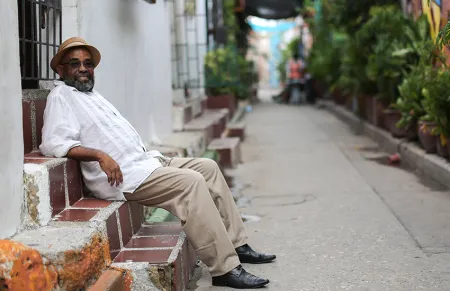
A young man approaches the backyard porch where hanging clothes dry in the sun. His white shirt and red cross in the bag states a conviction: the disease inhabits the house. She is there to administer vaccines, explains to a relapse woman in a chair. There is no answer, just a mumble inaudibly, disbelieving. In front of her, another old and squalid lady lays entertained with wisps of her ragged dress. Without annoyance or compassion, the nurse pulls a chair, scribbles notes and offers ampoules as if she was selling encyclopedias.
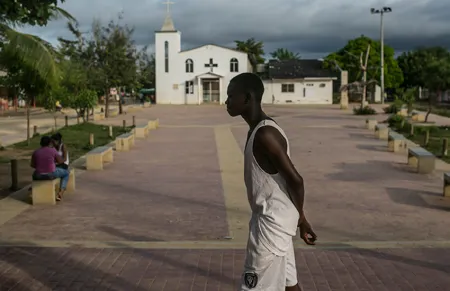
In a settlement in Colombia, founded by escaped slaves three centuries ago, Alexandre Moniz finds that while the iron shackles have been broken, the residents remain chained to the past by a desire to maintain the history for posterity.
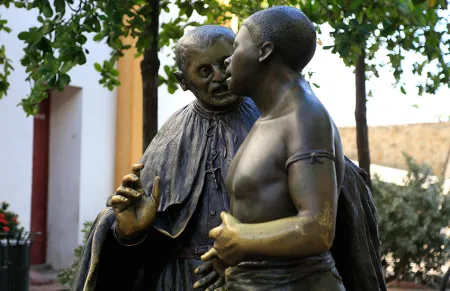
The story of Goa’s St Francis Xavier can be rivaled by that of Colombia’s San Pedro Claver. Both were Jesuits from Spain, missionaries, and their mortal remains preserved in Goa and Cartagena, Colombia respectively. Alexandre Moniz visits Cartagena to find that the similarities are uncanny but the veneration of the saints is far different.
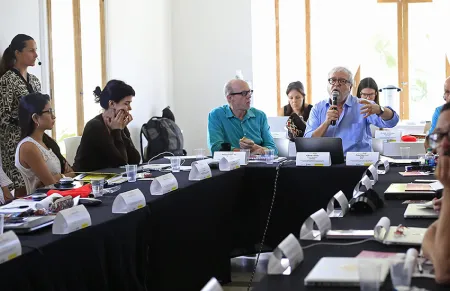
Gabriel García Márquez Fellowship in Cultural Journalism took place in Cartagena de Indias and San Basilio de Palenque, from August 29 to September 3, 2016. They were six days of intense work in which 15 journalists selected, along with masters, Hector Feliciano, Jonathan Levi, Ellah Wakatama Allfrey and Luis Rafael Sánchez shared, learned and worked around the craft of writing, the importance of tradition and African culture in the construction of identity in the Caribbean and the role of journalists putting on public discussion African issues.
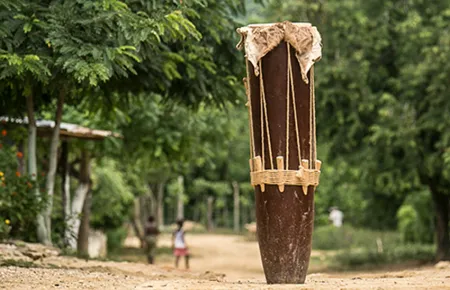
In 2016 the workshop explores the contributions of the local population of African origin in the culture of the Caribbean, particularly Cartagena de Indias and the nearby San Basilio de Palenque; using the tools of cultural journalism including interviews, reporting, and personal commentary. It is also an opportunity to think about the role of cultural journalism in an era in which creator and audience have an increasingly direct contact, facilitated by digital tools.
Filigree is a delicate kind of jewelry metalwork, usually of gold or silver, made with twisted threads and tiny beads in combination arranged in artistic motifs. The technique was originally brought to Mompox by Spanish colonists, and many families have practiced it for generations. There are dozens of artisan workshops in Mompox producing and selling exquisite hand-made earrings, bracelets, and other knick-knacks for prices varying as low as 15,000 pesos (~$5) and up to $200 depending on the complexity and weight of the item.
Where do perfectly happy momposinos get their rocking chairs from? In Mompox there are probably 20 carpenter’s workshops. And the business is going well: workshop owners sell the chairs to momposinos, to residents of other towns (e.g. Baranquilla) and to the tourists who come here from all the parts of Colombia. In the workshop where I meet Hernan, they make 200 chairs per month. And they sell them all out easily.
The horse-drawn carriages are the icon of Cartagena. First, it was a way of transport strongly related to the people of power, e.g. the members of the inquisition; it also became popular among the wealthy residents of the city. As time went by, carriages became more and more democratic: first as middle-class people’s mode of transportation and then, finally, since 1945, as a tourist attraction. Which is lately considered to be a controversial one.

